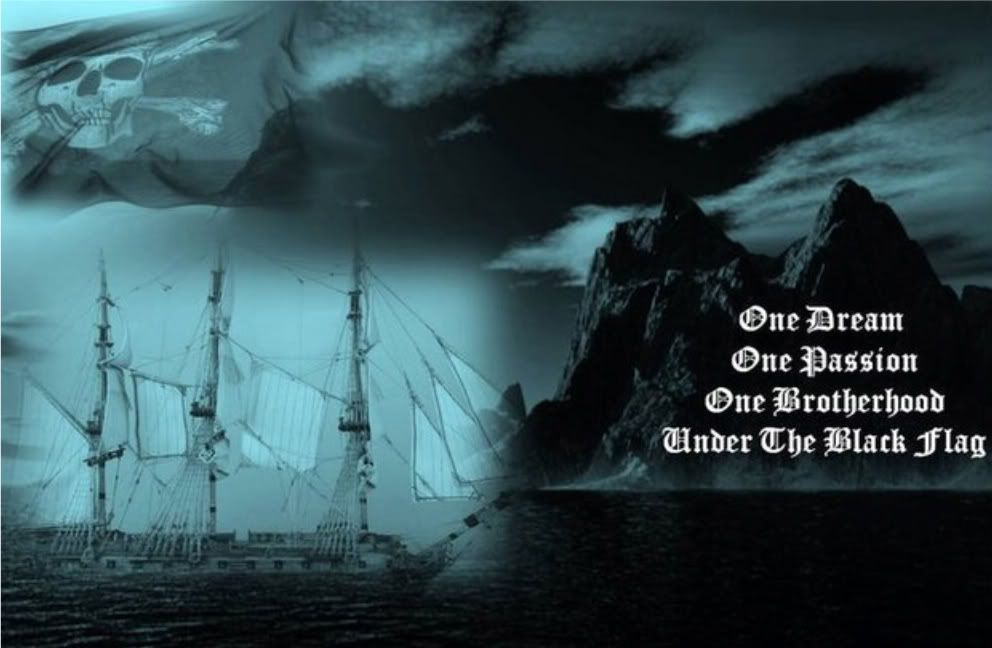Going Native
Going Native, history 3:06 μ.μ.Lionel Wafer was a French surgeon who joined the buccaneer crews in the Caribbean in 1677. While returning from a voyage to the East Indies he met with an accident and was forced to recuperate in an Indian village, eventually adopting Indian customs. This is his description of the return of some English sailors to the village:
"I sat awhile, cringing upon my hams among the Indians, after their fashion, painted as they were, and all naked but only about the waist, and with my nose-piece hanging over my mouth. 'Twas the better part of an hour before one of the crew, looking more narrowly upon me, cried out, "Here's our doctor," and immediately all congratulated my arrival among them."(29)This sort of dropping out and going native was not always accidental. The buccaneers of the Caribbean originally got their name from boucan, a practice of smoking meat they had learnt from the native Arawak Indians. The buccaneers were originally land squatters on the large Spanish owned island of Hispaniola (now Haiti and the Dominican Republic) - they turned to piracy following Spanish attempts to oust them. On Hispaniola they followed a way of life essentially identical to the native peoples who had preceded them. This sort of 'marooning life' was very clearly identified with piracy - apart from the buccaneers of Hispaniola and Tortuga the main other group of European dropouts in the New World were the logwood cutters of Bay of Campeche (now Honduras and Belize), a "rude drunken crew" who were considered by most observers to be interchangeable with pirates. They consciously chose a non-accumulative life living in independent communal settlements on the world's periphery.
The pirates' relations with the native peoples they encountered were split. Some pirates would enslave peoples they encountered, make them work, rape the women and steal. But other pirates settled down and intermarried - becoming part of the society. Particularly in Madagascar, the pirates mixing with the native population had produced "a dark Mulatto Race there." Contacts and cultural exchange between pirates, seamen and Africans led to the clear similarities between sea shanties and African songs. In 1743 some seamen were court-martialled for singing a "negro song".
These sort of connections went in both directions and were not as rare as you might imagine. A pirate called William May, stranded on the Madagascan island of Johanna got a shock when he was addressed in fluent English by one of the "negroes". He learned that the man had been taken from the island by an English ship and had lived for a while in Bethnal Green in London, before returning home. His new friend saved him from being captured by the English and taken to Bombay and hanged.
It is a common feature of what you might call 'pirate ideology' that pirates thought of themselves as free kings, as autonomous individual emperors. This was partly to do with the dream of wealth - Henry Avery was idolised for the enormous wealth he plundered; some believed he had set up his own pirate kingdom. Yet there was a pirate who achieved an even more remarkable rags-to-riches story, for he started out as a slave in the French colony of Martinique: Abraham Samuel, "Tolinor Rex", the King of Fort Dauphin. Samuel was a runaway slave who joined the crew of the pirate ship John and Rebecca, eventually becoming quartermaster. In 1696 the pirates captured a large and valuable prize and decided to retire and settle down in Madagascar. Samuel ended up in the abandoned French colony of Fort Dauphin where he was identified by a local princess as the child she had borne to a Frenchman during the occupancy of the colony.
Samuel suddenly found himself declared heir to the vacant throne of the kingdom. Slavers and merchants flocked to do business with "King Samuel" but he retained sympathies for his pirate comrades, allowing and assisting them to loot the merchants who came to trade with him. There were a number of similar, if less flamboyant, characters in the ports and harbours of Madagascar - pirates or slavers who had become local leaders with private armies of as many as 500 men.













